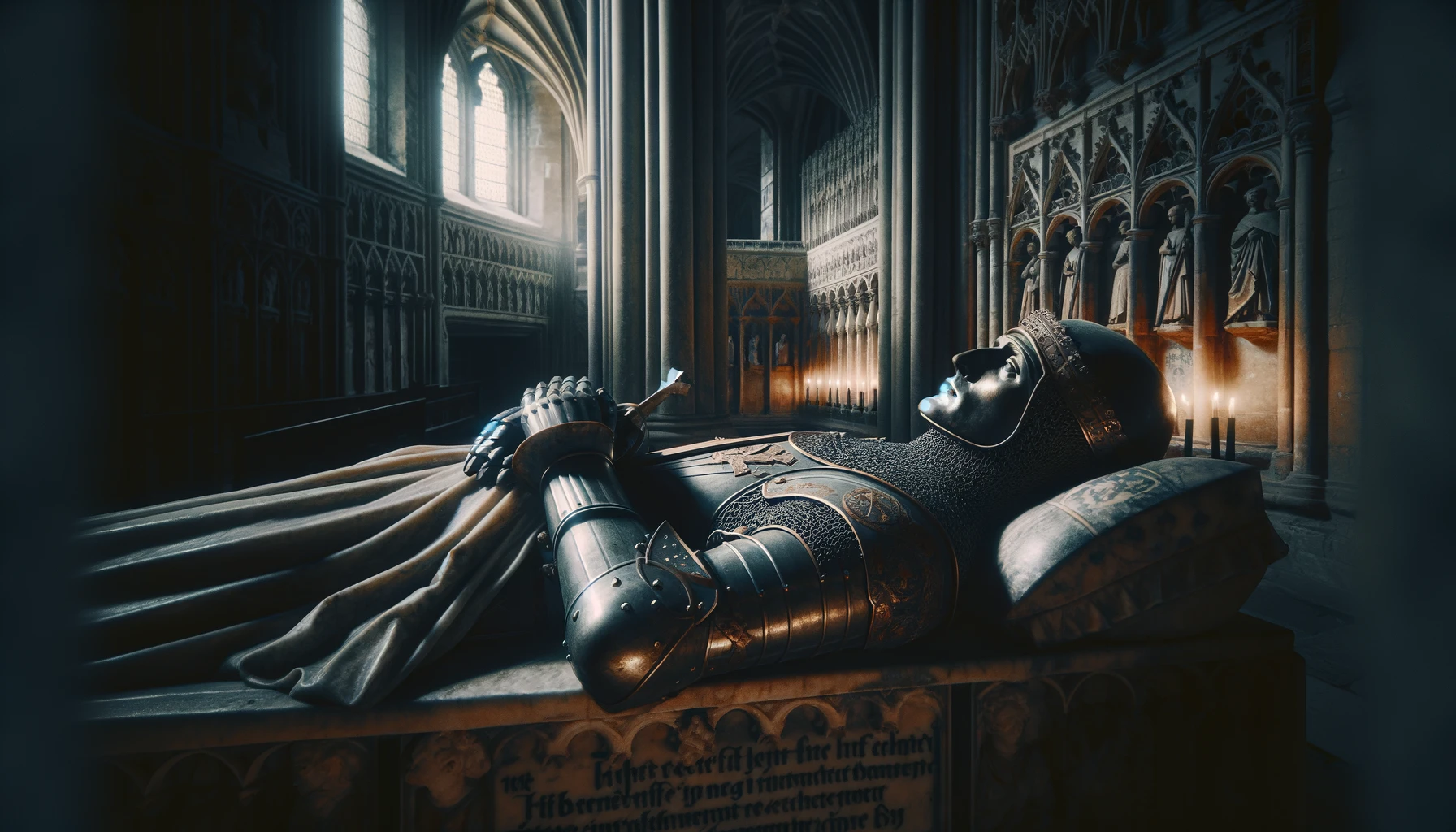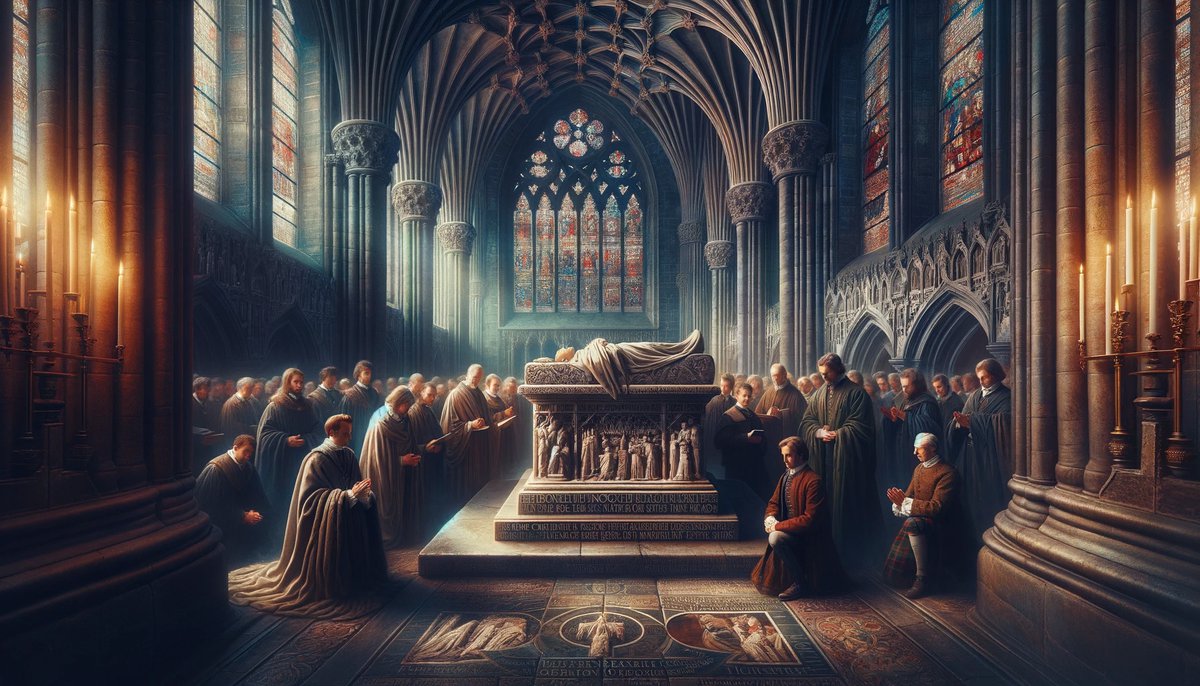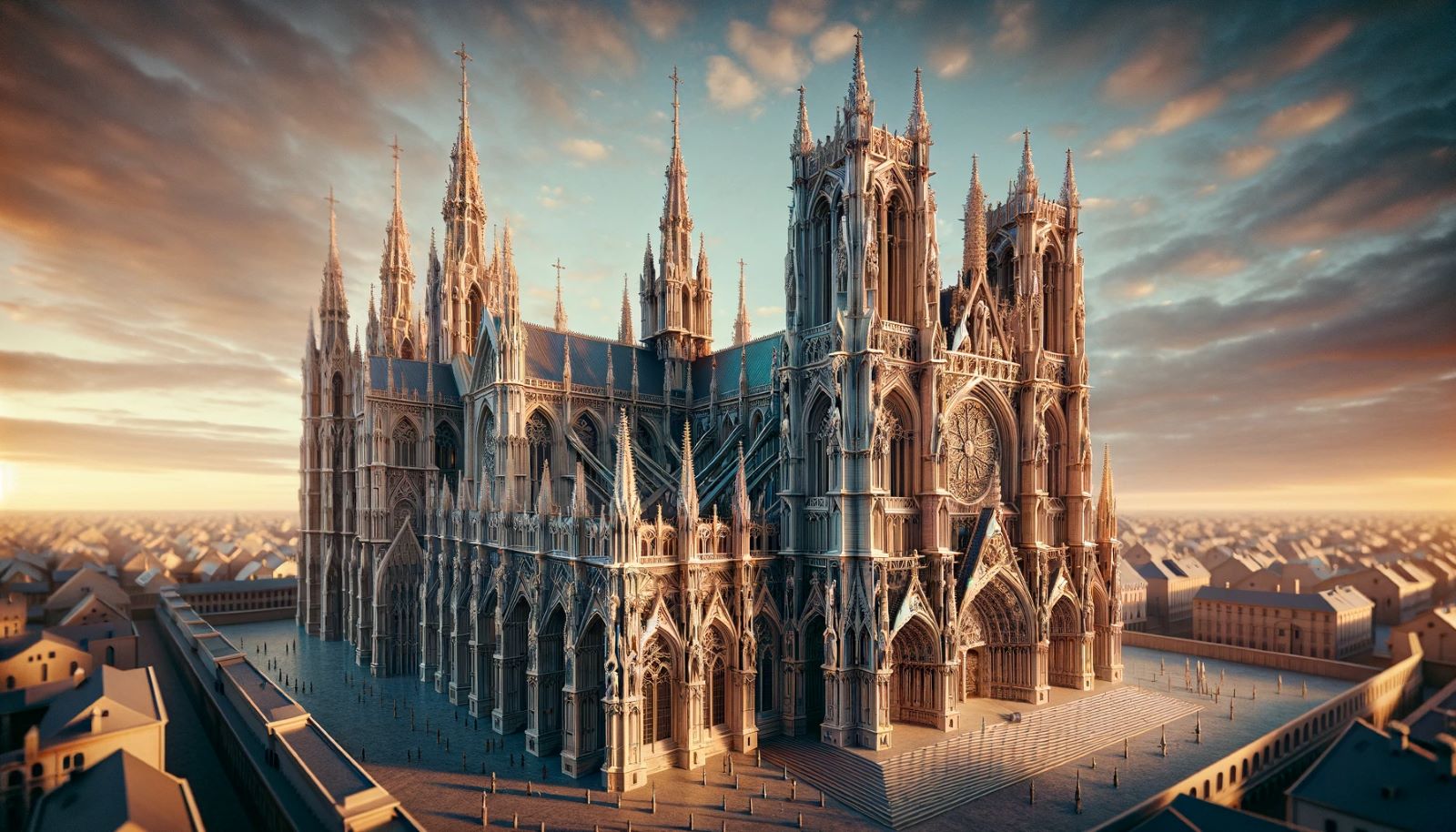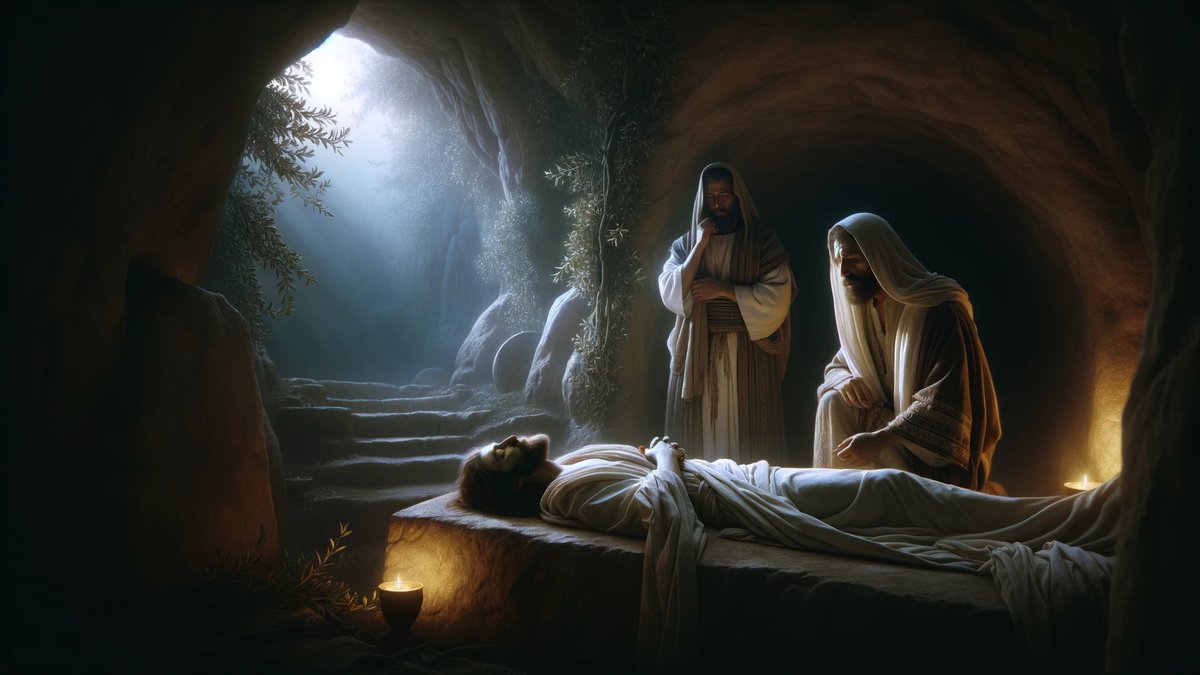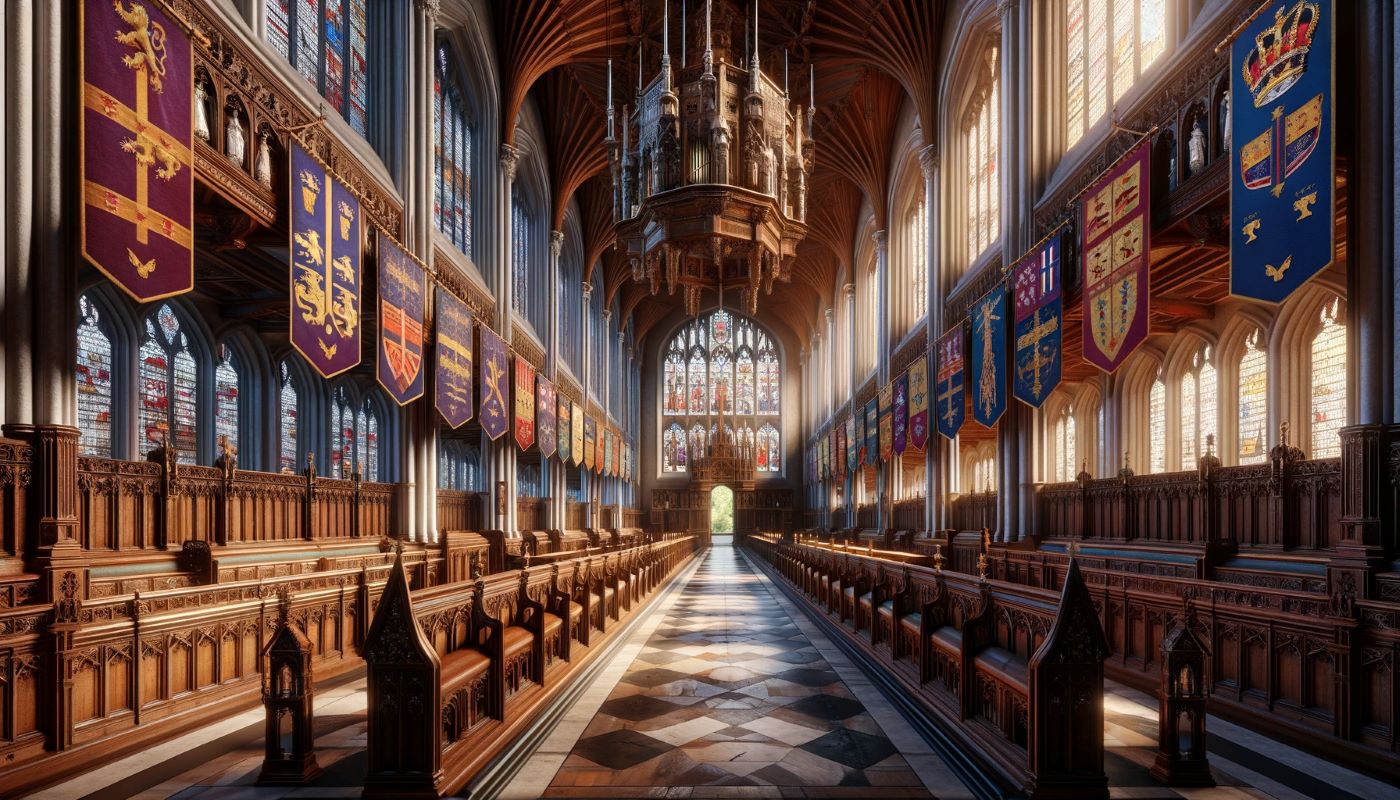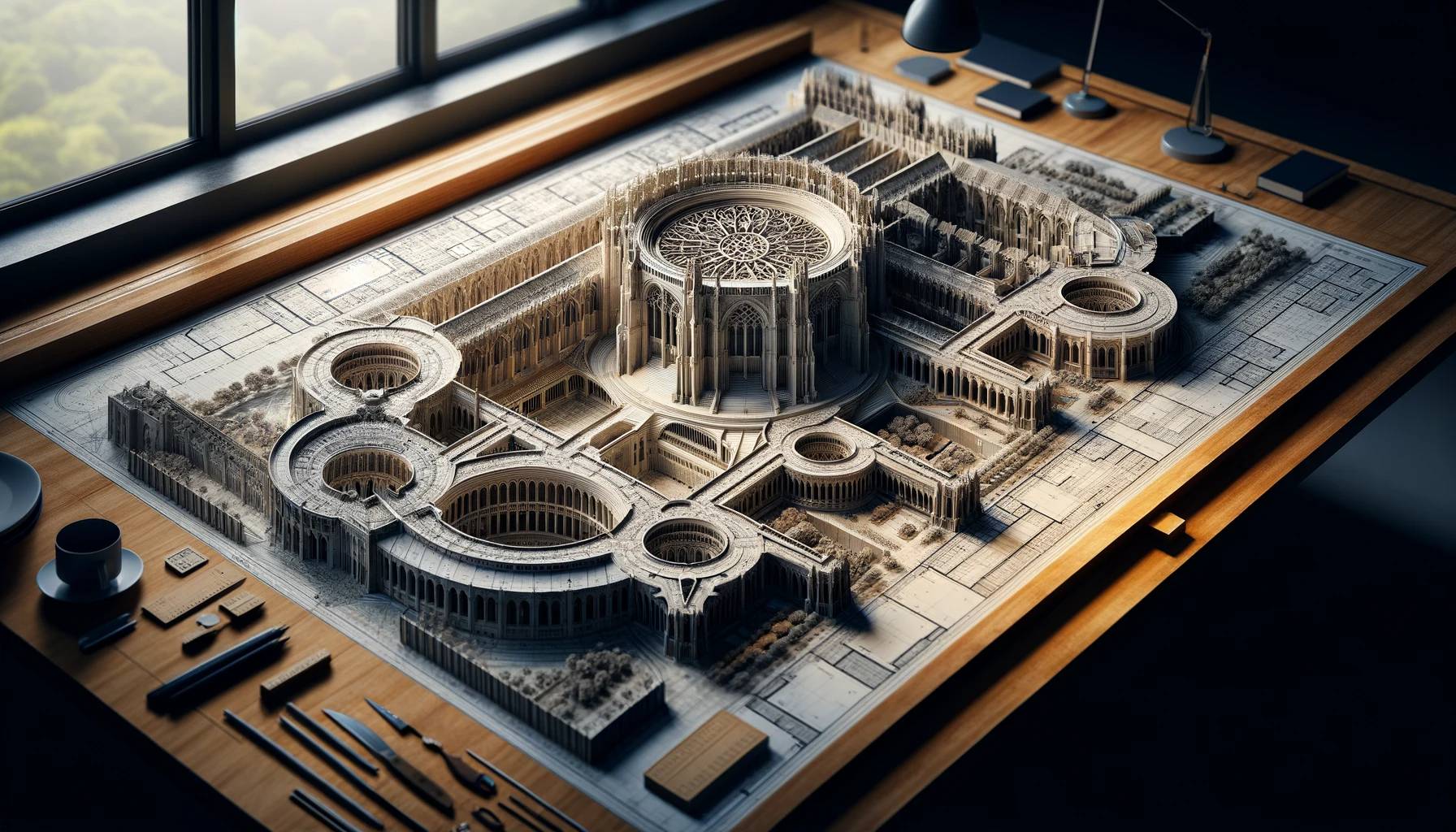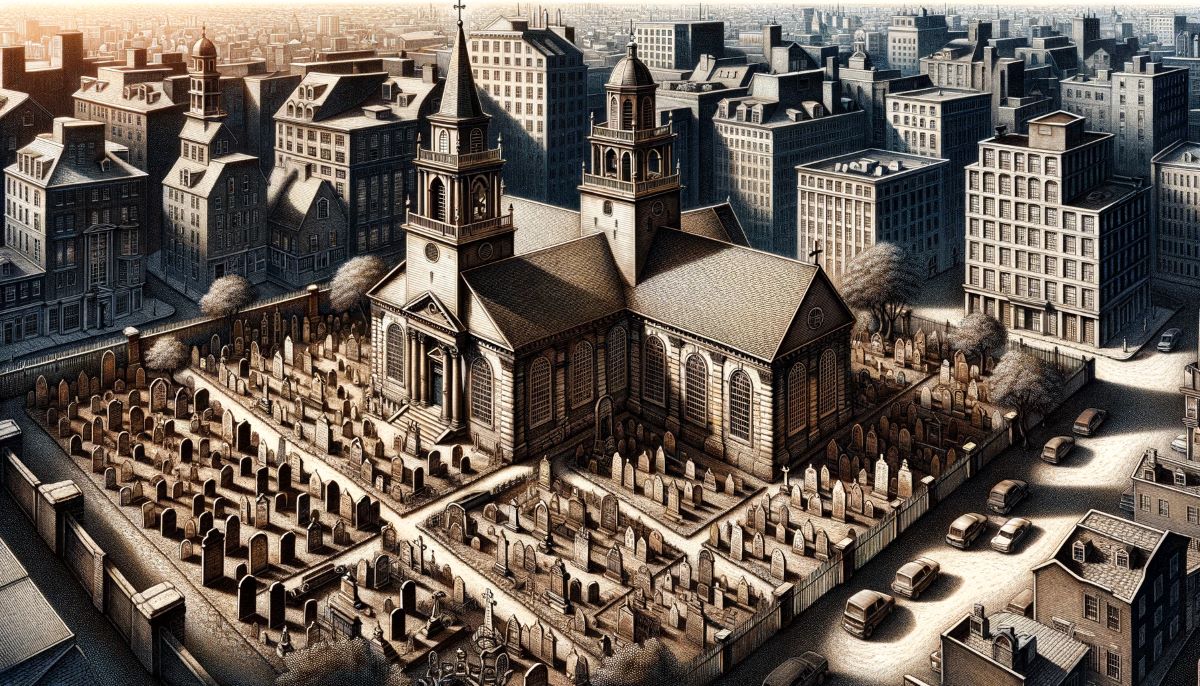Home>Arts and Culture>Who Is Buried At The National Cathedral
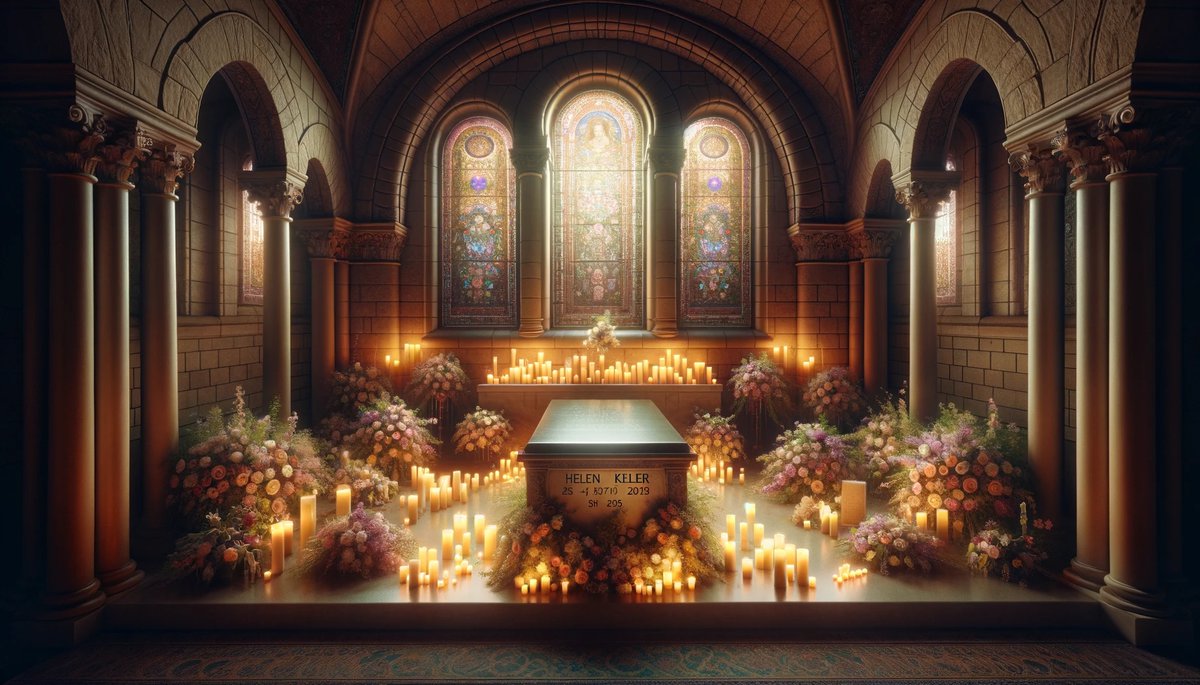

Arts and Culture
Who Is Buried At The National Cathedral
Published: February 19, 2024
Ericka Andersen, an editor at Christian.net, expertly merges digital strategy with content creation, focusing on faith and societal issues. Her communication skills enhance the platform's engaging narratives, fostering meaningful dialogue on belief's impact on society.
Discover the history and significance of the National Cathedral and learn about the notable figures buried there. Explore the intersection of arts and culture at this iconic landmark.
(Many of the links in this article redirect to a specific reviewed product. Your purchase of these products through affiliate links helps to generate commission for Christian.net, at no extra cost. Learn more)
Table of Contents
Introduction
The Washington National Cathedral, officially known as the Cathedral Church of Saint Peter and Saint Paul, is a breathtaking architectural masterpiece that stands as a symbol of faith, unity, and national pride. Nestled in the heart of Washington, D.C., this majestic structure is not only a place of worship but also a revered site for the interment of prominent individuals who have left an indelible mark on American history and culture.
As one of the most iconic landmarks in the United States, the National Cathedral serves as a testament to the country's rich heritage and enduring values. Its soaring spires and intricate Gothic design draw visitors from around the world, offering a sense of awe and reverence as they stand in the shadow of its grandeur.
Beyond its architectural significance, the National Cathedral holds a unique distinction as the final resting place for a select group of esteemed individuals who have contributed significantly to the nation's cultural, political, and social tapestry. From renowned leaders and visionaries to celebrated artists and influential figures, the cathedral's hallowed grounds serve as a poignant reminder of the legacies that continue to shape the American narrative.
In the following sections, we will delve into the captivating history of the National Cathedral, explore the notable figures interred within its sacred walls, examine the controversies surrounding burials at this revered site, and ponder the future of the cathedral as a cherished burial ground. Join us on a journey through time and remembrance as we unravel the stories and significance of those who are buried at the National Cathedral.
Read more: Who Is Buried In Ripon Cathedral
History of the National Cathedral
The history of the National Cathedral is a tale woven with threads of ambition, resilience, and unwavering dedication. Its origins can be traced back to the late 19th century when a group of visionary leaders envisioned a grand cathedral that would stand as a testament to the nation's faith and aspirations. In 1893, the idea for such a monumental structure took root during the meeting of the Protestant Episcopal Church's General Convention. This marked the beginning of a remarkable journey that would span decades and transcend generations.
The cathedral's construction commenced in 1907, with the groundbreaking ceremony symbolizing a pivotal moment in the realization of this ambitious endeavor. Designed in the Gothic style, the architectural blueprint drew inspiration from the grand cathedrals of Europe, reflecting a harmonious blend of tradition and innovation. However, the path to completion was fraught with challenges, including interruptions caused by two world wars and the Great Depression. Despite these adversities, the unwavering spirit of the cathedral's proponents ensured that the vision persisted through the trials of time.
It was not until 1976 that the National Cathedral was officially completed, culminating in a triumphant achievement that echoed the resilience and determination of those who had labored tirelessly to see it through. The consecration of the cathedral in the presence of esteemed dignitaries and religious leaders marked a profound moment in the annals of American history, solidifying its status as a revered national landmark.
Beyond its architectural magnificence, the National Cathedral has served as a poignant backdrop for significant events in the nation's narrative. From solemn memorial services to historic ceremonies, the cathedral has provided a sacred space for collective reflection and commemoration. Its role as a unifying force during times of triumph and tribulation has further cemented its place in the hearts of the American people.
Today, the National Cathedral stands as a living testament to the enduring spirit of faith, resilience, and unity. Its storied history reflects the aspirations and perseverance of those who dared to dream of a grand edifice that would transcend generations. As visitors gaze upon its majestic spires and intricate carvings, they are reminded of the indomitable human spirit that brought this monumental vision to fruition. The history of the National Cathedral is a testament to the power of unwavering dedication and the enduring legacy of a dream realized.
Notable Figures Buried at the National Cathedral
The hallowed grounds of the National Cathedral serve as the final resting place for a distinguished array of individuals who have left an indelible mark on American history and culture. These notable figures, interred within the sacred walls of the cathedral, represent a tapestry of influence, leadership, and artistic brilliance that has shaped the nation's narrative.
One of the most revered figures laid to rest at the National Cathedral is President Woodrow Wilson, the 28th President of the United States. His legacy as a transformative leader and advocate for global peace is commemorated through his burial in the cathedral's serene setting. The presence of his tomb serves as a poignant reminder of his enduring impact on the nation and the world.
In addition to President Wilson, the cathedral is also the final resting place of Helen Keller, a trailblazing advocate for the rights of individuals with disabilities. Keller's remarkable journey, marked by her triumph over adversity and her unwavering commitment to social justice, is honored through her burial at the National Cathedral. Her legacy continues to inspire generations, and her presence within the cathedral's walls symbolizes the enduring power of resilience and determination.
Furthermore, the National Cathedral is home to the interment site of Matthew Shepard, a young man whose tragic death sparked a national conversation about LGBTQ+ rights and hate crimes. Shepard's burial at the cathedral stands as a testament to the ongoing pursuit of equality and justice, serving as a poignant reminder of the impact of his life and the work that remains to be done in creating a more inclusive society.
The cathedral also houses the remains of renowned space pioneer, Lieutenant General Thomas D. White, whose contributions to the advancement of aerospace technology have left an indelible mark on the nation's scientific achievements. His burial at the National Cathedral serves as a tribute to his pioneering spirit and enduring legacy in the realm of space exploration.
These notable figures, among others, are honored within the sacred confines of the National Cathedral, their legacies preserved in a space that embodies reverence, remembrance, and the enduring spirit of their contributions to American society. As visitors traverse the hallowed halls of the cathedral, they are met with the echoes of history and the profound impact of these remarkable individuals whose lives continue to resonate within its walls.
Controversies Surrounding Burials at the National Cathedral
The serene halls of the National Cathedral have not been immune to controversies surrounding the interment of certain individuals within its sacred grounds. One of the most notable controversies arose from the decision to bury the renowned Confederate General, Stonewall Jackson, at the cathedral. This decision sparked intense debate and raised questions about the commemoration of historical figures whose legacies are intertwined with contentious chapters of American history.
The inclusion of General Jackson's burial site within the cathedral stirred impassioned discussions regarding the complexities of honoring individuals associated with the Confederacy, particularly in a space revered for its national significance. Critics argued that General Jackson's role in the Confederate army, which fought to preserve the institution of slavery, conflicted with the values of unity and inclusivity that the National Cathedral sought to embody. This controversy underscored the delicate balance between acknowledging historical figures and confronting the painful legacies of the past.
Furthermore, the decision to inter Philip Frohman, a controversial figure known for his involvement in the Iran-Contra scandal, within the cathedral's hallowed grounds also ignited fervent debates. Frohman's burial raised ethical concerns and prompted discussions about the criteria for commemorating individuals whose actions have been mired in controversy and ethical ambiguity. The inclusion of such figures within the sacred space of the National Cathedral prompted soul-searching conversations about the intersection of personal legacies, national history, and the moral responsibilities of commemoration.
In addition, the cathedral's decision to host the interment of President Woodrow Wilson, whose legacy includes contentious views on race and segregation, has been a subject of scrutiny and introspection. Wilson's complex historical record, marked by progressive policies alongside deeply troubling racial attitudes, has prompted reflection on the nuanced portrayal of historical figures within the context of a revered national monument.
These controversies have sparked introspective dialogues about the ethical considerations surrounding the interment of individuals with complex legacies within a space of national significance. They have prompted the cathedral and its stakeholders to grapple with the intricate intersections of history, memory, and moral reckoning. As the National Cathedral continues to navigate these complexities, it stands as a testament to the enduring dialogue about the commemoration of individuals whose legacies evoke profound and often conflicting emotions.
Future of the National Cathedral as a Burial Site
The future of the National Cathedral as a burial site unfolds against a backdrop of contemplation, evolution, and the enduring resonance of history. As the hallowed grounds of the cathedral continue to bear witness to the interment of notable figures, the question of its role as a revered burial site beckons a thoughtful exploration of legacy, commemoration, and the evolving narratives of American identity.
In contemplating the future of the National Cathedral as a burial site, it becomes evident that the cathedral stands at a crossroads of tradition and adaptation. The interment of esteemed individuals within its sacred walls has imbued the site with a profound sense of reverence and historical significance. However, the complexities inherent in commemorating figures with diverse legacies have prompted introspection and deliberation about the criteria for burial at this iconic location.
The cathedral's future as a burial site also intertwines with broader societal conversations about remembrance, inclusivity, and the ethical dimensions of commemoration. The evolving understanding of historical figures and their multifaceted legacies necessitates a nuanced approach to the selection of individuals interred at the National Cathedral. This contemplative stance reflects a commitment to honoring those whose contributions have shaped the nation's narrative while engaging in candid reflections on the complexities of their historical imprint.
Furthermore, the future of the National Cathedral as a burial site invites a reexamination of its role as a living monument to the enduring spirit of faith, unity, and national identity. As the cathedral continues to serve as a space for collective remembrance and contemplation, the selection of individuals for interment within its walls carries profound implications for the narratives woven into the fabric of American history. This consideration underscores the enduring significance of the cathedral as a site that bears witness to the legacies that continue to shape the nation's ethos.
In navigating the future of the National Cathedral as a burial site, the cathedral's stewards are tasked with the delicate balance of preserving its historical reverence while embracing an inclusive and reflective approach to commemoration. This forward-looking perspective acknowledges the evolving contours of American identity and the imperative of engaging with the complexities of historical legacies in a spirit of introspection and understanding.
As the National Cathedral charts its course forward, the future of the site as a burial ground embodies a commitment to honoring the past, engaging with the present, and shaping a narrative that resonates with the enduring values of unity, remembrance, and the timeless pursuit of a more inclusive and empathetic society.


